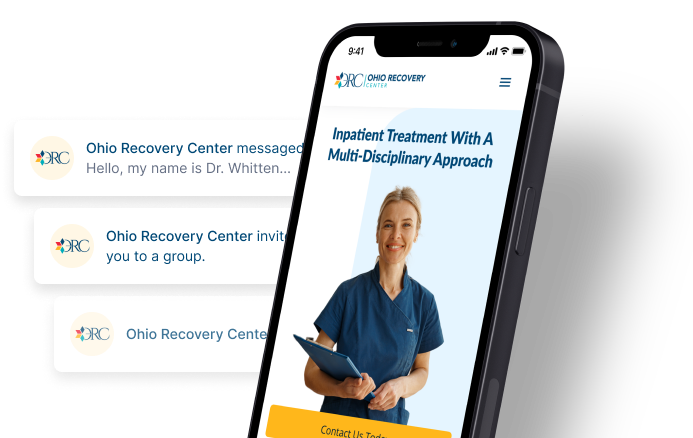Oxymorphone Side Effects & Warnings

Medically Reviewed By: Manish Mishra, MBBS
Oxymorphone is an opioid medication that produces side effects, such as sedation and constipation, in addition to treating pain. There are also warnings to know before taking oxymorphone, including drug interactions and overdose risk.

Oxymorphone (brand name Opana) is offered in an immediate-release tablet or extended-release tablet (Opana ER). This strong opioid is used to help treat those suffering from severe pain but may create a number of side effects that range in severity.
In addition, there are a number of warnings to know before taking oxymorphone. Seek the medical advice of your prescribing healthcare provider before starting oxymorphone, as serious side effects may occur.
Side Effects Of Oxymorphone
Oxymorphone, according to the United States Drug Enforcement Administration (DEA), is a Schedule II controlled substance, meaning it has a high potential for abuse and may lead to psychological or physical dependence.
This prescription drug assists with pain relief by affecting the central nervous system (CNS), and also causes a potentially habit-forming euphoria when taken in high doses.
Common Side Effects
Oxymorphone is an opioid agonist and binds to the opioid receptors, depressing the CNS. This opioid analgesic can help those in need of relief from chronic pain.
Despite this, the United States Food and Drug Administration (FDA) states some of the side effects of Opana ER may include:
- dry mouth
- drowsiness
- loss of appetite
- fatigue
- headache
- dizziness
- sedation
- constipation
Withdrawal Symptoms
Those who take Oxymorphone and abruptly cease the pain medication may experience withdrawal symptoms. Some of the withdrawal symptoms of oxymorphone may include:
- cravings for the drug
- irritability
- increased blood pressure
- sleeping difficulties
- nausea
- anxiety
- fast heartbeat
Oxymorphone Warnings
Before you take oxymorphone, consult the medication guide that comes with your prescription. You will likely need to store the medication at room temperature.
Additionally, a person should not take oxymorphone on an empty stomach. Swallow the tablet whole or as prescribed by your doctor. Using the drug in a way that’s not prescribed is considered opioid abuse.
Oxymorphone Overdose
Per the DEA, those taking a large dose of oxymorphone or abusing the drug in other ways may experience a life-threatening overdose. Some of the signs of an oxymorphone overdose may include:
- shallow breathing or respiratory depression
- clammy and cold skin
- chest pain or fluctuations in heart rate
- circulatory collapse
- cardiac arrest
- loss of consciousness
- death
If you believe a possible overdose has taken place, contact 911 and seek medical help immediately. A healthcare professional may provide a medication known as naloxone (Narcan) to help reverse the effects of an opioid overdose.
Pre-Existing Conditions
Those with certain pre-existing conditions should avoid oxymorphone, as side effects can become more severe.
The following should avoid oxymorphone:
- those with breathing problems such as sleep apnea or chronic obstructive pulmonary disease (COPD)
- those with a previous head injury
- those with Addison disease or an adrenal gland problem
- those with paralytic ileus, a condition where there’s a blockage in the intestines
- those with pancreas or liver disease
Also, women who are pregnant or breastfeeding should avoid oxymorphone, as the drug may pass from mother to child.
Drug Interactions
Oxymorphone should not be combined with a number of prescription or illicit drugs. Certain substances can interact with oxymorphone which may produce serious side effects.
Some of the medications to avoid while taking oxymorphone include:
- antihistamines
- supplements
- muscle relaxants
- nalbuphine
- over-the-counter pain relievers
- pentazocine (Talwin)
- benzodiazepines
- alcohol
- buprenorphine (Suboxone)
- butorphanol (Stadol)
- opioid medications such as oxycodone (Oxycontin), hydrocodone (Norco), or hydromorphone (Dilaudid)
In addition, some may experience allergic reactions and even hives if certain products are combined with oxymorphone.
If you or a loved one live with prescription opioid addiction and need help in Ohio, please contact Ohio Recovery Center for information on our inpatient treatment options.
- Drug Enforcement Administration — Oxymorphone https://www.deadiversion.usdoj.gov/drug_chem_info/oxymorphone.pdf
- Food and Drug Administration — Opana https://www.accessdata.fda.gov/drugsatfda_docs/label/2013/201655s004lbl.pdf
- National Institute on Drug Abuse — What are Prescription Opioids? https://nida.nih.gov/publications/drugfacts/prescription-opioids
- National Library of Medicine: MedlinePlus — Oxymorphone https://medlineplus.gov/druginfo/meds/a610022.html
- Pharmacy and Therapeutics — Oxymorphone Extended-Release Tablets (Opana ER) For the Management of Chronic Pain https://www.ncbi.nlm.nih.gov/pmc/articles/PMC2888551/
- Therapeutics and Clinical Risk Management — Review of oral oxymorphone in the management of pain https://www.ncbi.nlm.nih.gov/pmc/articles/PMC2621383/

